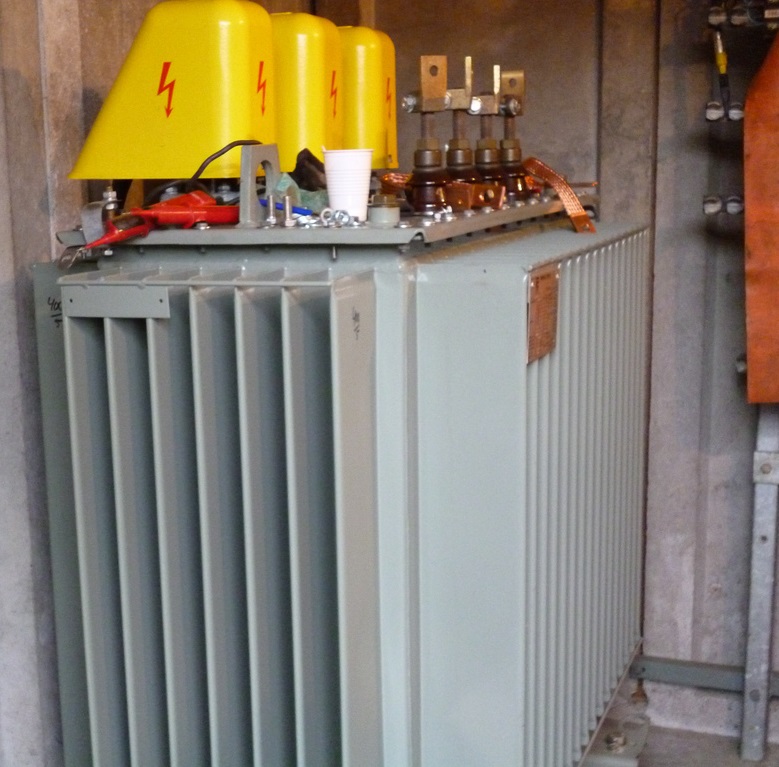
Distribution station
Although we gladly leave the definition of the overall grid architecture to the grid operators,
we propose to integrate a DigitalTF transmitter in the MV/LV distribution station such that all electricity consuming and generating devices are automatically connected without any commissioning. The MV/LV distribution station has information about the LV grid, and can use DigitalTF to control electricity consumers and generators to contribute to the LV grid health. This opposed to any IoT solution, where a complex process of commissioning, installation and maintenance is required to achieve such a network.

SaaS Interfacing
To accommodate the SaaS IT infrastructure we propose this architecture. The cellular modem and controlling CPU in the MV/LV distribution station connect to the various SaaS platforms with appropriate industry-standard protocols. The local software has access to the active and reactive power levels via a power meter and can send DigitalTF data via the DigitalTF transmitter.

Protocol, dataframe
As an application example, we show a protocol of a fixed 20-bit continuously repeating dataframe. 3 bits are reserved for the control of public lighting (7 dim levels and OFF). 3 bits are reserved for reactive power (cos phi) control over all LV grid generators. 7 bits are reserved for PV/BES active power control and Demand/Response for household appliances based on price/scarcity. 7 bits are reserved for the same but then a prediction for that value 24 hours into the future
3 bits Public Lighting Control. This control is uniform for all public lighting within the LV grid that makes use of this service. The 8 values correspond to OFF (LED driver standby), 10%, 20%, 30%, 50%, 80%, 100% and EMERGENCY. If, in the specific LV grid, one or more lamps need a different schedule we propose to use an IoT solution for those lamps.
3 bits reactive power control. Power factor is 0.9 to 1.0 leading or lagging with a total of 8 values. As the penetration of Distributed Generation increases, so do the requirements on reactive power control as stated in EN50438-2013 (<16A), CLC/TS50549 (>16A) and IEEE1547a-2014.
7 bits for PV/BES active power control and Demand/Response. This data space is divided: Active power control range and price (scarcity) range. Active power control only occurs when energy is abundant and grid overload needs to be avoided. Active power can be reduced in steps of 5%, but all values in this range are treated equal by the energy consumers: power is abundant and can be used for virtually free. The price or scarcity range indicates to devices how to minimize the electricity cost for their owner. If a device, e.g. a dishwasher, only uses electricity when the price (or scarcity) is low it will minimize its impact on the monthly bill. At the top of the price/scarcity range are some values for emergency grid overload management. All devices able to comply are to shut down.
7 bits for 24-hour prediction. The values are identical to those in the previous paragraph, however, they represent a prediction for the value 24 hours later. By storing the streaming value, a price/scarcity profile can be accumulated which can be used to prepare a consumption strategy over the next 24 hours. Not only will a dishwasher know the current price/scarcity, but it will also know if that price/scarcity will become lower in the next 24 hours, such that it can delay its consumption. If the price/scarcity only increases, it is better to consume immediately.





